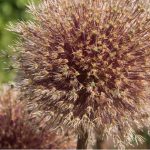Last updated on March 16th, 2022
Our site is reader supported, this means we may earn a small commission from Amazon and other affiliates when you buy through links on our site.
Alliums should be planted early to mid-autumn
Alliums are fantastic flowers that can be grown in such a way that they come back year after year. They add strong, bold colours and shapes to any garden border. Moreover, you can wait until the seed pods manifest and integrate them into Christmas decorations if you so choose, clipping flowers throughout the blooming period and adding them into other floral arrangements too.
Not many flowers offer such amazing round flowers and some varieties can get extremely large, as large as a baby’s head.
Planting Alliums
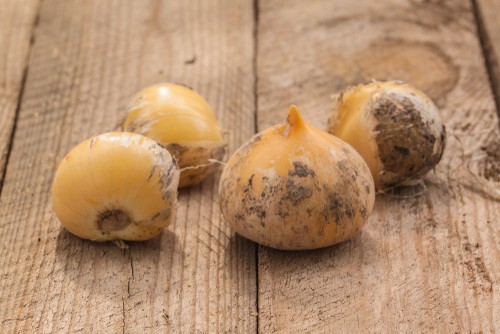
Plant in well-drained soil in full sun
When you prepare to plant, find an area with well-drained soil and ideally in full sunlight because they like lots of sun. Test the area in which you want them to grow, by checking on the sunlight it receives all day. If you have heavy clay soil you can help the drainage by adding grit or coarse sand and mixing it in well. Alliums really do not like wet soil so well-drained soil is a must.
Small and medium-sized varieties like the Allium ‘Purple Sensation’ or Allium ‘Hair’ can be planted in large clumps, all together. You should check the size of the bulb because it indicates how deeply to plant them. On average, about 10-15cm apart and deep but in general you want to plant all Alliums about 3 times deeper than the width of the bulb. You can plant them in groups of twos or threes if your garden theme allows.
Spacing large flowering varieties
Larger varieties like that of the ‘Schubertii’ and ‘Globemaster’ should be planted, again, according to the size of the bulb but at least 15cm deep with more space to accommodate the bigger heads. They require on average 30-45cm apart in terms of spacing.
Growing Alliums in the Ground
Once the location is decided upon and you are ready to plant, start by digging a hole or a trench and adding 5cm worth of grit or compost at the bottom. Place the bulbs into the hole or trench, with a gap that is three times the width of each bulb in between. Then cover each bulb with a mixture of soil and grit or just soil if your soil is well-drained. Press down firmly to remove any air pockets and do not walk across the area because this can damage the crowns.
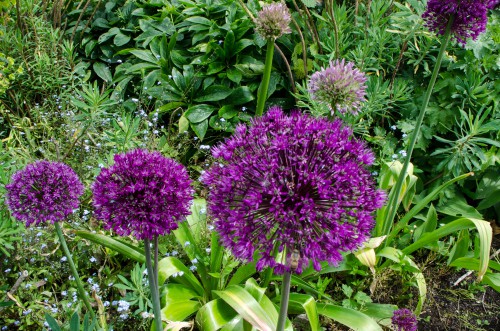
Growing in Containers
If growing in your Alliums in containers, you want the bulbs to be planted in pots that are the same depth as the bulbs would need to be in the ground, but they often do well planted in deep pots. Your bulbs should have at least 4cm of compost underneath. If you want to use multiple bulbs in one container, you can place them one bulb width apart (but don’t let them touch the sides of the container) layering one variety, then the next, with the smallest of bulbs placed nearest the top. This is called the lasagne method. When all is done, cover the final layer of bulbs with compost and pat down firmly.
Aftercare
What to do after flowering
The bulbs will do well if you minimise the number of leaves you cut off when picking any flowers. When you do this, be sure to leave a section of the leafy part on the stem so that the bulbs can store enough food to go into dormancy. With these flowers, you don’t want to remove the browning foliage as it appears. Wait until every leaf has turned brown and shrivelled completely. If you remove some of the leaves midway through, you may not get flowers the following season because the plant won’t have enough food stored for winter. Once the leaves have died back properly they can then be cut back to ground level.
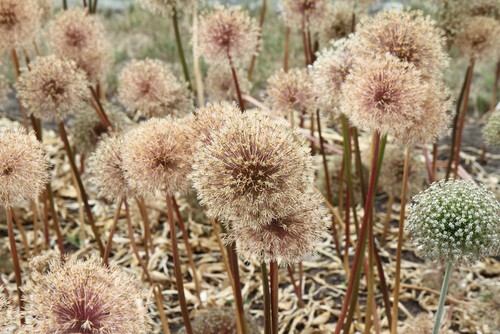
Learn more about what to do with Alliums after flowering in this post
Cut flowers
If you cut the flowers for floral displays, you should change the water regularly. If the plants start to smell a bit, you can add one drop of bleach to mitigate it. Left alone they will last about 2 weeks.
Depending on the weather where you live, in most parts of the UK, you will be able to get away with keeping the bulbs in the garden, mulched adequately over winter. If you have them in containers, they can be brought inside to protect them against frost and small bulblets are removed and transplanted into a second pot. Alternatively, you can remove the bulbs, dust them with a fungicide, let them dry, store them in paper bags over winter and then replant them in the spring.
Propagation
Dividing bulbs and removing aerial bulbils
There are many species that produce offsets, visible once the leaves have died. You can lift the bulbs and look for these little “bulblets” to remove them. There are other varieties like the Allium roseum that produce aerial bulbils in their flower heads, these can be removed carefully, separated and planted in moist compost about 2.5cm apart and covered with an additional 1cm of compost. Being so small, you won’t get flowers for a few years but they are well worth keeping because Allium bulbs are generally expensive to buy new.
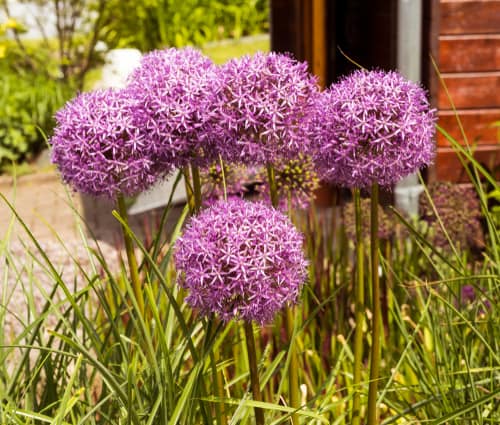
Growing Alliums from seed
Propagation is possible by seed. But note, if you have a hybrid plant, it will vary in terms of shape and colour from the original parent plant. When propagating by seed, you want to remove the seeds and sow them as soon as they are ripe. They should be sown into trays mixed with grit and compost and covered with at least 5mm of grit. Place them in a shaded area outside. Alternatively, you can save the seeds in your refrigerator and sow them in spring once the temperatures reach 13 degrees C. It will take about 12 weeks to germinate, and flowers, again, could take several years so it’s a slow process.
Pests and Diseases
If you grow them in borders, you might not have as many issues, but all Alliums can suffer from onion white rot, onion fly or downy mildew, and this seems to be more problematic when they are being grown in pots. You can rectify these issues with better circulation where they have been planted. It is also important to verify that the soil in which they are planted has proper drainage. In terms of pests, as with most plants, slugs, snails and allium leaf miners are the things you must look out for and remove when you see them. You can also treat the area with commercial products from your local garden centre for slugs and snails.
Overall, Alliums are easy to grow. They produce flowers in spring and early summer and thrive best in full sun with well-drained soil. You can propagate from the bulbs or seeds and cut the flowers as they bloom for arrangements or simply leave them to their own devices but remember they are best divided every few years.
Image credits – Shutterstock.com

